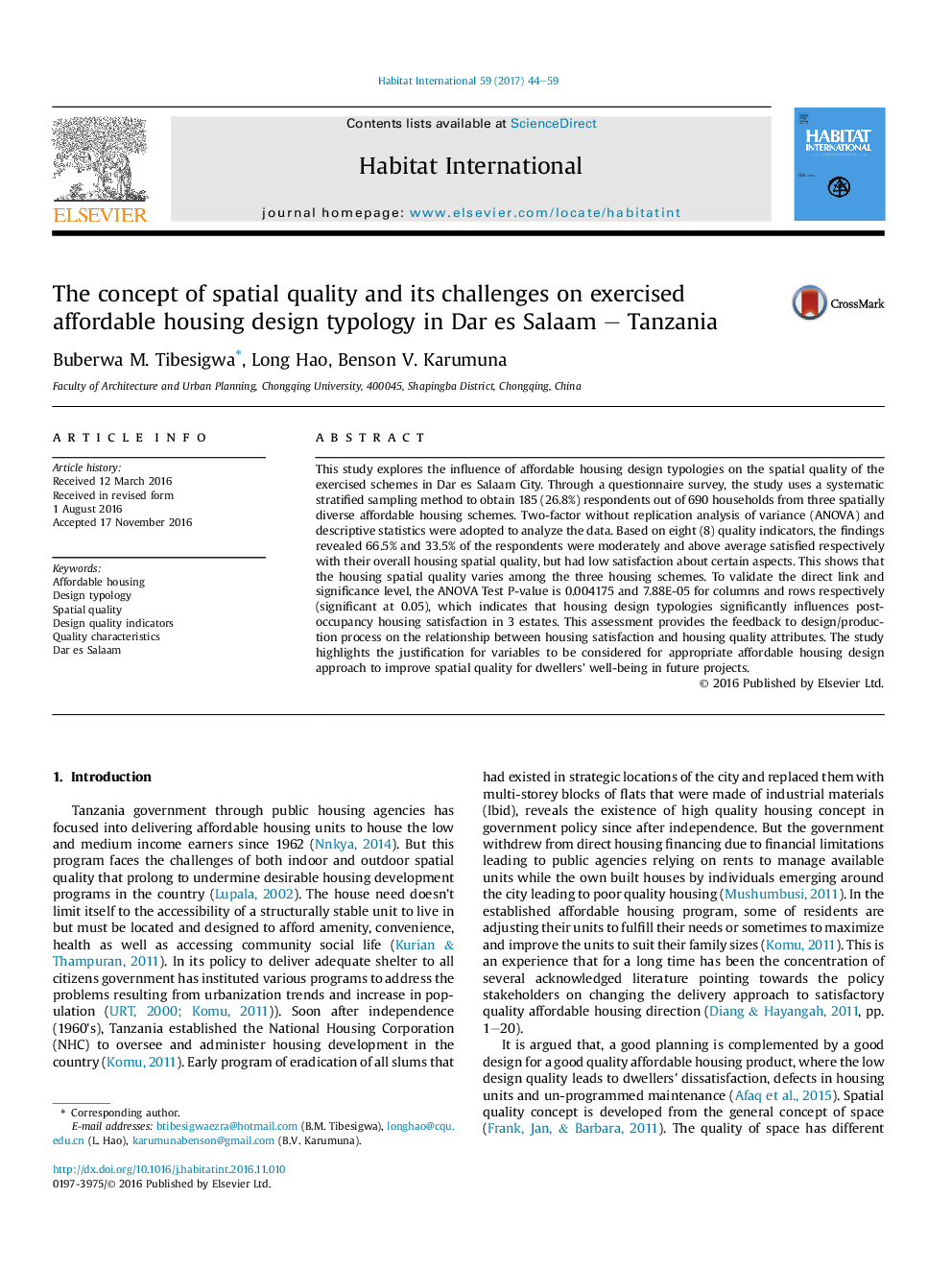| Article ID | Journal | Published Year | Pages | File Type |
|---|---|---|---|---|
| 5114698 | Habitat International | 2017 | 16 Pages |
Abstract
This study explores the influence of affordable housing design typologies on the spatial quality of the exercised schemes in Dar es Salaam City. Through a questionnaire survey, the study uses a systematic stratified sampling method to obtain 185 (26.8%) respondents out of 690 households from three spatially diverse affordable housing schemes. Two-factor without replication analysis of variance (ANOVA) and descriptive statistics were adopted to analyze the data. Based on eight (8) quality indicators, the findings revealed 66.5% and 33.5% of the respondents were moderately and above average satisfied respectively with their overall housing spatial quality, but had low satisfaction about certain aspects. This shows that the housing spatial quality varies among the three housing schemes. To validate the direct link and significance level, the ANOVA Test P-value is 0.004175 and 7.88E-05 for columns and rows respectively (significant at 0.05), which indicates that housing design typologies significantly influences post-occupancy housing satisfaction in 3 estates. This assessment provides the feedback to design/production process on the relationship between housing satisfaction and housing quality attributes. The study highlights the justification for variables to be considered for appropriate affordable housing design approach to improve spatial quality for dwellers' well-being in future projects.
Related Topics
Social Sciences and Humanities
Social Sciences
Development
Authors
Buberwa M. Tibesigwa, Long Hao, Benson V. Karumuna,
